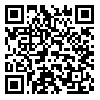Mon, Dec 22, 2025
| فارسی
Volume 13, Issue 4 (Winter 2012)
Advances in Cognitive Sciences 2012, 13(4): 1-18 |
Back to browse issues page
Download citation:
BibTeX | RIS | EndNote | Medlars | ProCite | Reference Manager | RefWorks
Send citation to:



BibTeX | RIS | EndNote | Medlars | ProCite | Reference Manager | RefWorks
Send citation to:
Zahedi K, Zahhab Nazouri S. Body Parts of the ‘Head’ Domain in Persian and English Proverbs and Adages: A Cultural Cognitive Corpus-Based Analysis. Advances in Cognitive Sciences 2012; 13 (4) :1-18
URL: http://icssjournal.ir/article-1-387-en.html
URL: http://icssjournal.ir/article-1-387-en.html
1- Associate Professor of Linguistics and Cognitive Science of Language, Shahid Beheshti University, Tehran, Iran.
2- M.A. in Linguistics, Shahid Beheshti University, Tehran, Iran.
2- M.A. in Linguistics, Shahid Beheshti University, Tehran, Iran.
Abstract: (3522 Views)
Objective: Body parts constitute embodiment which is in and by itself an integral part of human cognition. The present research provides a qualitative and quantitative analysis of body parts in Persian and English. The aim is two-fold: on the one hand, it provides a statistical analysis of how body parts act in the two languages; and, on the other hand, it presents a cultural cognitive inquiry into their similarities and differences.
Method: The research is corpus-based accompanied by chi-square statistical analysis within cognitive metaphorizing. The corpora comprise two Persian and two English dictionaries of proverbs and adages. The body parts are also limited to the ones in the ‘head’ domain.
Results: Findings indicate that body part metaphors are fundamental in semantic extension, substantiating their target domains in both languages. However, the extensions in the two languages are both different in their types and in the linguistic mechanisms realizing them. The verbal element was found to be the most instrumental tool in the language of metaphorizing in both.
Conclusion: Although body parts constitute a universal mechanism for semiosis, they act differently both in the types that signify and in the mechanisms realizing them between languages.
Method: The research is corpus-based accompanied by chi-square statistical analysis within cognitive metaphorizing. The corpora comprise two Persian and two English dictionaries of proverbs and adages. The body parts are also limited to the ones in the ‘head’ domain.
Results: Findings indicate that body part metaphors are fundamental in semantic extension, substantiating their target domains in both languages. However, the extensions in the two languages are both different in their types and in the linguistic mechanisms realizing them. The verbal element was found to be the most instrumental tool in the language of metaphorizing in both.
Conclusion: Although body parts constitute a universal mechanism for semiosis, they act differently both in the types that signify and in the mechanisms realizing them between languages.
Type of Study: Research |
Subject:
Special
Received: 2011/08/23 | Accepted: 2011/10/23 | Published: 2011/12/22
Received: 2011/08/23 | Accepted: 2011/10/23 | Published: 2011/12/22
Send email to the article author
| Rights and permissions | |
 |
This work is licensed under a Creative Commons Attribution-NonCommercial 4.0 International License. |



